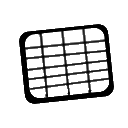Worth 15% of your course grade
 Important Dates
Important Dates
- Jul 14: Rough Drafts for Peer Review, due by 11:59 PM
- Jul 15: Peer Feedback, due by 11:59 PM
- Jul 18: Project 2 due by 11:59 PM
- Jul 20: Grace period ends at 11:59 PM
Goals
 The Project Assignment
The Project Assignment
You will survey the kinds of writing people in your intended career do and arrange the information in a table. You’ll provide a short description of the different kinds of writing, identify the typical audiences and purposes, and classify the kinds of writing, matching the items to the chapters in our textbook and resources online. This chart will be a go-to resource once you are in the workplace.
Step-by-Step Details
Step 1: Decide on the career you will focus on for your project.
Your major and your experiences may prepare you for several careers. For this project, you need to choose one (ideally the one you are most likely to pursue after graduation) and explore this field in more detail.
You can choose any career you like. You can focus on a career related to a job or internship you have had. You can also think about an academic future if grad school is in your future.
Step 2: Set your goals for the project.
As was the case for Project 1, you have the opportunity to aim for the grade you want to earn for Project 2. The options below outline what you need to do for the grade you want to receive.
 Warning! Remember that no grade is guaranteed.
Warning! Remember that no grade is guaranteed. Make sure your work is error-free, fully-developed, and ready to share with the intended audiences. Any work that is incomplete or that contains multiple errors will not earn an A or an A-.
For instance, say the writer aimed for a B and used design elements to make the table visually appealing, but the information in the table was incomplete and sometimes inaccurate. The project earns a C rather than a B.
Step 3: Create your table on writing in your field.
Create your project in Microsoft Word. Do not use Excel or Google Drive because the formatting options are limited in those tools. Remember that formatting errors will lower your grade.
Do a thorough analysis of the writing in your field. Survey the kinds of writing people in your intended career do and come up with a comprehensive list. In your table, provide a short description of the different kinds of writing, identify the typical audience and purpose, and classify the kinds of writing, matching the items to the chapters in our textbook and resources online. Use these two examples to help guide your research and writing:
Think of your audience for this project as yourself. Your goal is to learn about the characteristics of the kinds of writing you will typically do in the workplace. A year from now, if you were in the workplace, you should be able to come back to this analysis to remind yourself of the kinds of features to include in a text you are writing.
You will post your draft for peer review by 11:59 PM on Thursday, July 14. If you do not post your draft on time, you will not be assigned peer review partners.
You will send feedback to your partners by 11:59 PM on Friday, July 15. Use the advice you receive from your readers to revise before the due date. There are no rewrites or revisions after work is graded.
Step 4: Write your cover memo.
Write a cover memo that tells me whatever information I need to know to understand the work you did on your project. This memo should be the first page of your project. Your table will be the second page. Both documents should be in one file.
Your memo should use standard memo format, with the headings of To:, From:, Subject:, and Date. Include this information:
- Tell me your field and career so that I have some context for your project.
- Tell me what grade you aimed for (e.g., I aimed for a B+ by including headings and …).
- Tell me anything else you want me to know before I grade your project.
Be sure to explain the background on your piece fully. This cover memo is where you tell me about the work you put into the project and provide some self-evaluation of your work. The cover memo is the first thing I will read, so it is your opportunity to make sure that I have all the information that I need to understand your project.
Step 5: Submit your project in Canvas.
When you are finished with your cover memo and bio statement, you will turn in your work in Canvas, following the submission instructions. Remember that there are no rewrites or revisions after work is graded.





